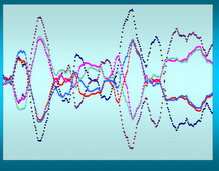Just for fun I thought I would whip up a contrarian filter – one that would deliberately lose money. The reason for this is that my back testing software only permits entering buy positions so in order to show how a short filter would work I have to have one that shows a loss.
Now this was really quick and only serves one purpose – to show how regression to the mean works. The important line in the filter below is the last one – the close is more than 18% greater than the 21-period EMA. This appears to be too much in many instances and the stock will fall back to be a little closer to its primary moving average.
show stocks where close is between 15 and 35
and average volume(90) > 50000
and ema(21) is more than 18% < close
I also tried the same filter on low price stocks and achieved even better results. I changed the first line to:
show stocks where close is between 2 and 10
For the first version we achieved losses (short gains) of about 28K. For the second we achieved losses (short gains) of about 44K. These are after holding for 4 days and selling automatically or sold as a result of hitting the 10% stop loss.
Once again if you are looking to enter a short position check the stock’s proximity to its primary moving average. I use the EMA 21 but you could use the MA 20 or any other average that you might feel comfortable with. On the other hand if you are thinking about going long a stock – you might want to wait till if falls back and kisses the primary moving average before you take your position.
One other thought that is pertinent – the back testing software is set to select the highest volume stock of each day’s output for entry. So even at the top of its run volume should show on a stock going down.
In the future - (going to be 70 degrees here in the mid-Atlantic today so you all know where I'm going - no Mary Ellen Margaret - not shopping - golfing) I will try to work up a filter designed to more accurately predict the tops.
Monday, December 18, 2006
Subscribe to:
Post Comments (Atom)

No comments:
Post a Comment